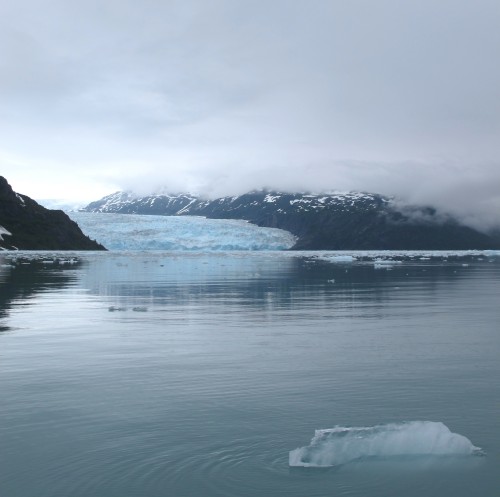 The first tips of yellow leaves are showing among aspens and cottonwoods in western Colorado. Summer, though still plenty warm, is beginning to turn. You think about what inevitably comes, leaves dropping, opening the stage for snow and ice. You imagine what it will be like to hear the crunch of it every time you step out the door, how it will drift on the road, and icicles will populate the eaves.
The first tips of yellow leaves are showing among aspens and cottonwoods in western Colorado. Summer, though still plenty warm, is beginning to turn. You think about what inevitably comes, leaves dropping, opening the stage for snow and ice. You imagine what it will be like to hear the crunch of it every time you step out the door, how it will drift on the road, and icicles will populate the eaves.
Every year, I marvel at the tick-tock reliability of seasons. Only now, I’m a little season-lagged.
Much of my summer was spent in south-central Alaska in the company of glaciers. I was back in the Ice Age, traveling late Pleistocene landscapes that look more like 20,000 years ago than today. Even in June, I’d been in a world blanketed in ice and snow, only bare patches of mountains showing through.
That was the Harding Icefield, a 700-square-mile chunk of ice plopped down in the middle of the Kenai Mountains almost due south of Anchorage. Five of us headed out on a trek with ropes, skis, sleds, and ice axes. When you’re not at the retreating edges of glaciers, and you can’t see the annual deflation of the deep icefields, it doesn’t feel like a climate catastrophe. It feels as if you are back in an ancient world.
It is easy to forget how the world has changed, how land was once partly locked in ice, and great beasts were everywhere. I went up north to remember.
Some seasons pass through the length of a year. Others turn over the course of tens of thousands of years, ice ages swinging in and out to the Malankovitch pace-maker of our planet’s orbit, and to the fluctuating temperatures of ocean currents washing in and out. We live on a planet of seasons, pendulums swinging in and out of each other. It is also a planet of sudden changes and reversals, a planet easily tipped by chemistry-changing forces such as ourselves. Climate science suggests we may be on our way to a different kind of planet, one without ice. Most species, ourselves included, did not evolve in such a world. The earth has not been without ice for at least a few million years.
Maybe I went north for nostalgic reasons, taking advantage of a view that may not always be here. We set tracks across beautiful, white desolation, dropping camps in the company of nunataks, ragged mountains summits sticking up through ice. White-outs closed in around us, and bluebird days filled the country with sunlight. The week before our arrival, 47 inches of snow had landed up here. The place felt like a dream.
Later in the summer, I finished up time in nearby Prince William Sound where I was studying coastal facets of the Ice Age. Catching a boat ride out with my family and a bunch of our friends, we passed through a place called Icy Bay. True to its name, this fjord-like bay was half-filled with floating hunks of ice. The boat captain slalomed between these chunks shaped like swans and candlesticks. They’d spilled from a glacier that dominated the view ahead, an enormous, blue-backed monster dumping into milky, cold water. Finally, the boat slowed, then drifted to a stop. There was too much ice.
We grabbed a fishing net and dipped a 60-pound chunk out of the water. It was the right size to drop in an ice chest, and we took it back with us. That night, we piled into a hotel room in Anchorage. Chipping off pieces of the glacier, we passed around drinks. Children hid in a pillow fort that they’d built, playing cards and giggling. Adults toasted with glacier ice, drinking water that had been in a solid form for thousands of years.
At this far end of summer, back home on the desert’s edge in Colorado, I think about that big, clear hunk of ice. These days have been warm. I missed the heat of summer while I was in Alaska, so this is really the first time I’ve felt it. Soon enough, things will change. The sun will dip to the south, shedding less direct light on my side of the planet. Snow will fall. A little taste of the Ice Age will creep back in, something I will savor. I’ll chip pieces of it off and drop them in my drink, remembering that I live on a planet of swinging seasons.
Craig Childs has written about a dozen books on nature, science, and far-flung travel. On the radio, he does commentaries for Morning Edition, and in print he’s had pieces published in The Sun, Men’s Journal, and The New York Times. He lives off the grid in western Colorado with a couple wild-eyed kids and a wife of great wisdom.
Photo courtesy of Craig Childs.